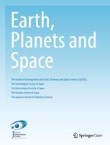Earth, Planets and Space welcomes submissions to the special issue on 'Understanding phreatic eruptions - recent observations of Kusatsu-Shirane volcano and equivalents -'.
It has been two years since the unexpected eruption of Kusatsu-Shirane volcano (Moto-Shirane) on January 23, 2018. The eruption took place after the 1,500 years of dormancy. It shed light on the difficulty on the prediction of phreatic eruptions but also motivated studies on the long-term and more regional scale studies of the dormant volcanoes. This special issue will include the past and on-going researches on the Kusatsu-Shirane volcano with varieties of disciplines such as seismology, geodesy, geomagnetism, geochemistry, petrology, and risk assessment of volcanoes. We also welcome papers on the similar volcanoes with phreatic eruptions.
Submission Instructions
Before submitting your manuscript, please ensure you have carefully read the submission Guidelines Earth, Planets and Space. The complete manuscript should be submitted through the Earth, Planets and Space submission system. To ensure that you submit to the correct special issue please select the appropriate special issue in the drop-down menu upon submission. In addition, indicate within your cover letter that you wish your manuscript to be considered as part of the special issue on 'Understanding phreatic eruptions - recent observations of Kusatsu-Shirane volcano and equivalents -'.
All submissions will undergo rigorous peer review and accepted articles will be published within the journal as a collection.
Lead Guest Editor
Yasuo Ogawa, Tokyo Institute of Technology, Japan
Guest Editors
Takeshi Ohba , Tokai University, Japan
Tobias Fischer , University of New Mexico, USA
Mare Yamamoto, Tohoku University, Japan
Art Jolly, GNS Science, New Zealand
Rapid publication: Online submission, electronic peer review and production make the process of publishing your article simple and efficient
High visibility and international readership in your field: Open access publication ensures high visibility and maximum exposure for your work - anyone with online access can read your article
No space constraints: Publishing online means unlimited space for figures, extensive data and video footage
Authors retain copyright, licensing the article under a Creative Commons license: articles can be freely redistributed and reused as long as the article is correctly attributed
For editorial enquiries please contact editorial@earth-planets-space.com.
Sign up for article alerts to keep updated on articles published in Earth, Planets and Space - including articles published in this special issue!



















